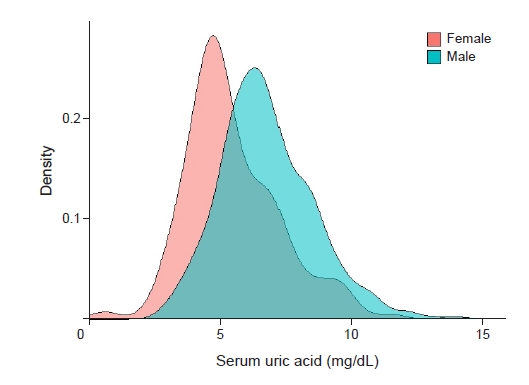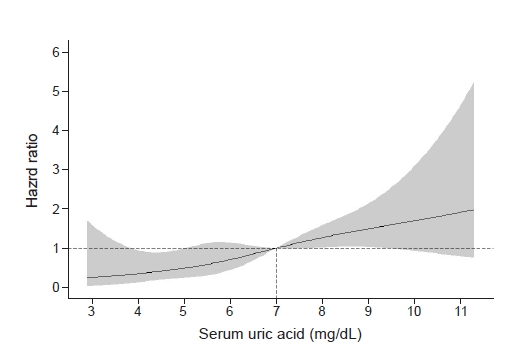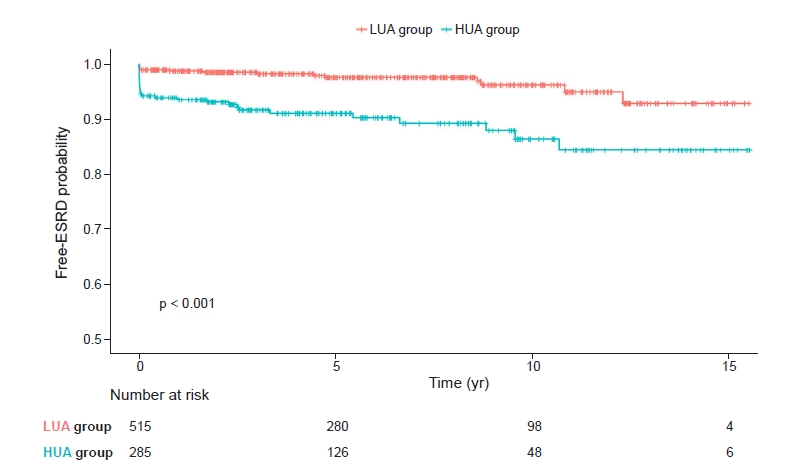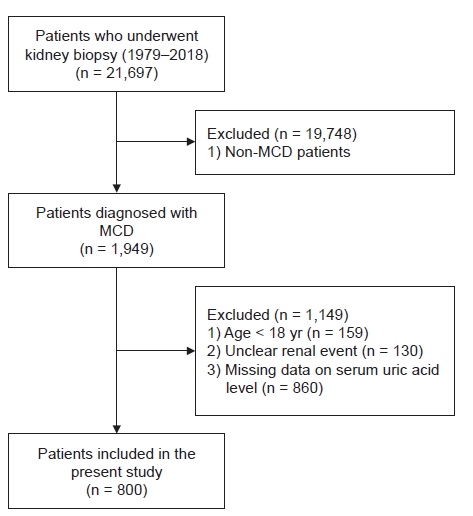1. Johnson RJ, Feehally John, Floege J. Comprehensive clinical nephrology. 6th ed. Edinburgh: Elsevier; 2019.
2. Vivarelli M, Massella L, Ruggiero B, Emma F. Minimal change disease.
Clin J Am Soc Nephrol 2017;12:332–345.


3. Hogan J, Radhakrishnan J. The treatment of minimal change disease in adults.
J Am Soc Nephrol 2013;24:702–711.


4. Gesualdo L, Di Palma AM, Morrone LF, et al. The Italian experience of the national registry of renal biopsies.
Kidney Int 2004;66:890–894.


5. Haas M, Meehan SM, Karrison TG, Spargo BH. Changing etiologies of unexplained adult nephrotic syndrome: a comparison of renal biopsy findings from 1976-1979 and 1995-1997.
Am J Kidney Dis 1997;30:621–631.


6. Waldman M, Crew RJ, Valeri A, et al. Adult minimal-change disease: clinical characteristics, treatment, and outcomes.
Clin J Am Soc Nephrol 2007;2:445–453.


7. Jennette JC, Falk RJ. Adult minimal change glomerulopathy with acute renal failure.
Am J Kidney Dis 1990;16:432–437.


8. Guzzi F, Cirillo L, Roperto RM, Romagnani P, Lazzeri E. Molecular mechanisms of the acute kidney injury to chronic kidney disease transition: an updated view.
Int J Mol Sci 2019;20:4941.



9. Sautin YY, Johnson RJ. Uric acid: the oxidant-antioxidant paradox.
Nucleosides Nucleotides Nucleic Acids 2008;27:608–619.



10. Hahn K, Kanbay M, Lanaspa MA, Johnson RJ, Ejaz AA. Serum uric acid and acute kidney injury: a mini review.
J Adv Res 2017;8:529–536.


11. Gustafsson D, Unwin R. The pathophysiology of hyperuricaemia and its possible relationship to cardiovascular disease, morbidity and mortality.
BMC Nephrol 2013;14:164.



12. Johnson RJ, Kang DH, Feig D, et al. Is there a pathogenetic role for uric acid in hypertension and cardiovascular and renal disease?
Hypertension 2003;41:1183–1190.


13. Li M, Hou W, Zhang X, Hu L, Tang Z. Hyperuricemia and risk of stroke: a systematic review and meta-analysis of prospective studies.
Atherosclerosis 2014;232:265–270.


14. Nakanishi N, Okamoto M, Yoshida H, Matsuo Y, Suzuki K, Tatara K. Serum uric acid and risk for development of hypertension and impaired fasting glucose or Type II diabetes in Japanese male office workers.
Eur J Epidemiol 2003;18:523–530.


15. Zhuang Y, Yu Y, Huang Y, Zhong X. Study on hyperuricemia in HBV-associated glomerulonephritis.
Am J Clin Pathol 2014;141:72–77.


16. Oh TR, Choi HS, Kim CS, et al. The effects of hyperuricemia on the prognosis of IgA nephropathy are more potent in females.
J Clin Med 2020;9:176.



17. Oh TR, Choi HS, Kim CS, et al. Serum uric acid is associated with renal prognosis of lupus nephritis in women but not in men.
J Clin Med 2020;9:773.



18. Jin M, Yang F, Yang I, et al. Uric acid, hyperuricemia and vascular diseases. Front Biosci (Landmark Ed) 2012;17:656–669.
19. Levey AS, Bosch JP, Lewis JB, Greene T, Rogers N, Roth D. A more accurate method to estimate glomerular filtration rate from serum creatinine: a new prediction equation. Modification of Diet in Renal Disease Study Group.
Ann Intern Med 1999;130:461–470.


20. Xiao H, Li Q, Wang F, Yao Y, Zhong X. [Relationship between hyperuricemia and primary nephrotic syndrome in children]. Zhonghua Er Ke Za Zhi 2014 52:859862.In Chinese.
21. Asakawa S, Shibata S, Morimoto C, et al. Podocyte injury and albuminuria in experimental hyperuricemic model rats.
Oxid Med Cell Longev 2017;2017:3759153.



22. Nicholas PD 3rd, Garrahy I. Adult minimal change disease with acute kidney injury: a case report and literature review.
J Community Hosp Intern Med Perspect 2019;9:507–510.



23. Fujigaki Y, Tamura Y, Nagura M, et al. Unique proximal tubular cell injury and the development of acute kidney injury in adult patients with minimal change nephrotic syndrome.
BMC Nephrol 2017;18:339.



24. Ryu ES, Kim MJ, Shin HS, et al. Uric acid-induced phenotypic transition of renal tubular cells as a novel mechanism of chronic kidney disease.
Am J Physiol Renal Physiol 2013;304:F471–F480.


25. Romi MM, Arfian N, Tranggono U, Setyaningsih WA, Sari DC. Uric acid causes kidney injury through inducing fibroblast expansion, Endothelin-1 expression, and inflammation.
BMC Nephrol 2017;18:326.



26. Lenoir O, Milon M, Virsolvy A, et al. Direct action of endothelin-1 on podocytes promotes diabetic glomerulosclerosis.
J Am Soc Nephrol 2014;25:1050–1062.



27. Sánchez-Lozada LG, Tapia E, Santamaría J, et al. Mild hyperuricemia induces vasoconstriction and maintains glomerular hypertension in normal and remnant kidney rats.
Kidney Int 2005;67:237–247.


28. Corry DB, Eslami P, Yamamoto K, Nyby MD, Makino H, Tuck ML. Uric acid stimulates vascular smooth muscle cell proliferation and oxidative stress via the vascular renin-angiotensin system.
J Hypertens 2008;26:269–275.


29. Sahali D, Sendeyo K, Mangier M, et al. Immunopathogenesis of idiopathic nephrotic syndrome with relapse.
Semin Immunopathol 2014;36:421–429.



30. Lai KW, Wei CL, Tan LK, et al. Overexpression of interleukin-13 induces minimal-change-like nephropathy in rats.
J Am Soc Nephrol 2007;18:1476–1485.


31. Wang Y, Wang YP, Tay YC, Harris DC. Progressive adriamycin nephropathy in mice: sequence of histologic and immunohistochemical events.
Kidney Int 2000;58:1797–1804.


32. Wang Y, Wang YP, Tay YC, Harris DC. Role of CD8(
+) cells in the progression of murine adriamycin nephropathy.
Kidney Int 2001;59:941–949.


33. Webb R, Jeffries M, Sawalha AH. Uric acid directly promotes human T-cell activation.
Am J Med Sci 2009;337:23–27.


34. Shi Y, Evans JE, Rock KL. Molecular identification of a danger signal that alerts the immune system to dying cells.
Nature 2003;425:516–521.


35. Greene T. Randomized and observational studies in nephrology: how strong is the evidence?
Am J Kidney Dis 2009;53:377–388.











 PDF Links
PDF Links PubReader
PubReader ePub Link
ePub Link Full text via DOI
Full text via DOI Download Citation
Download Citation Print
Print















